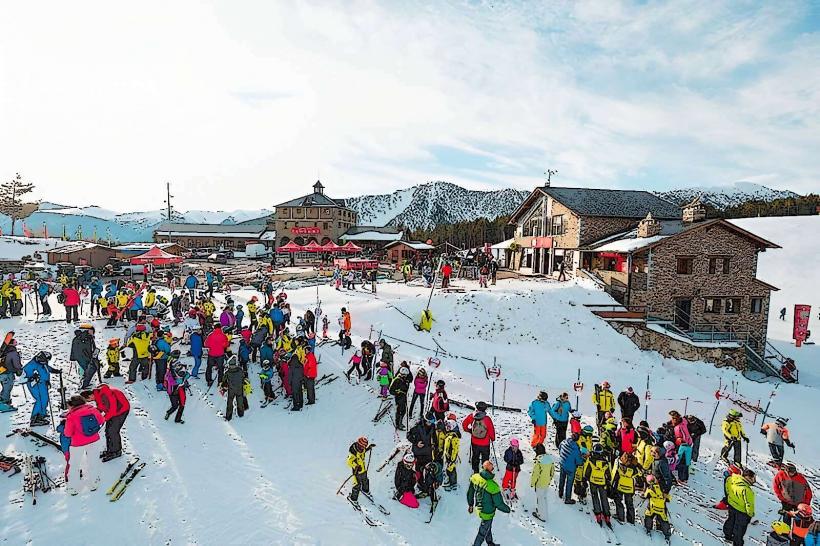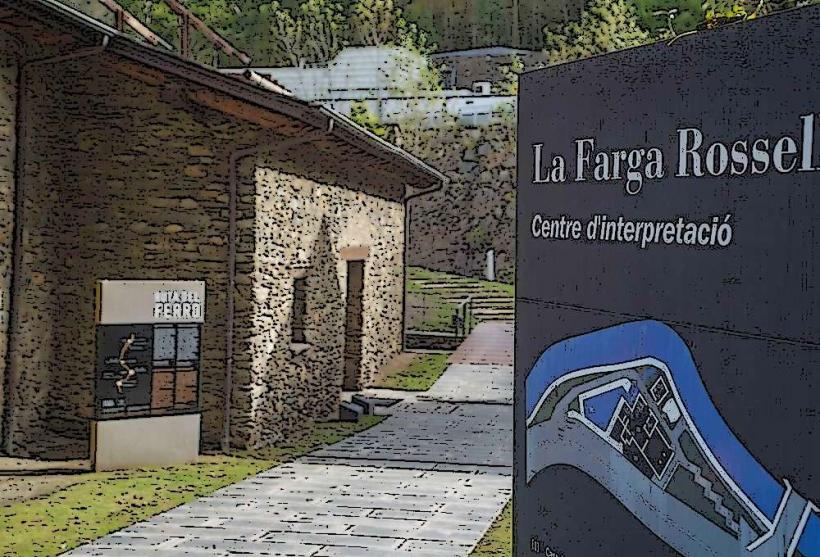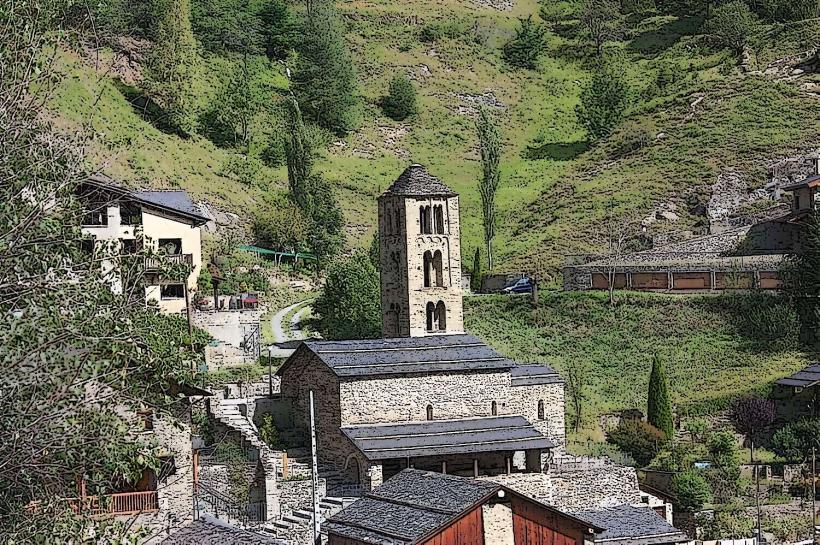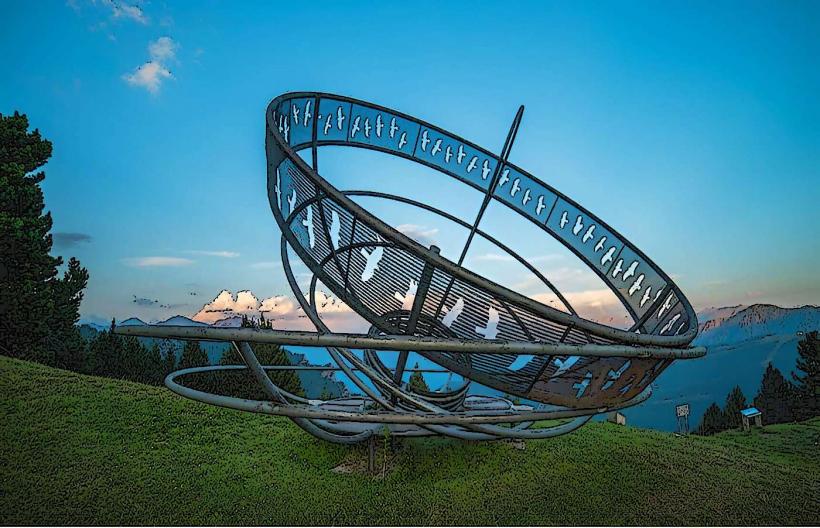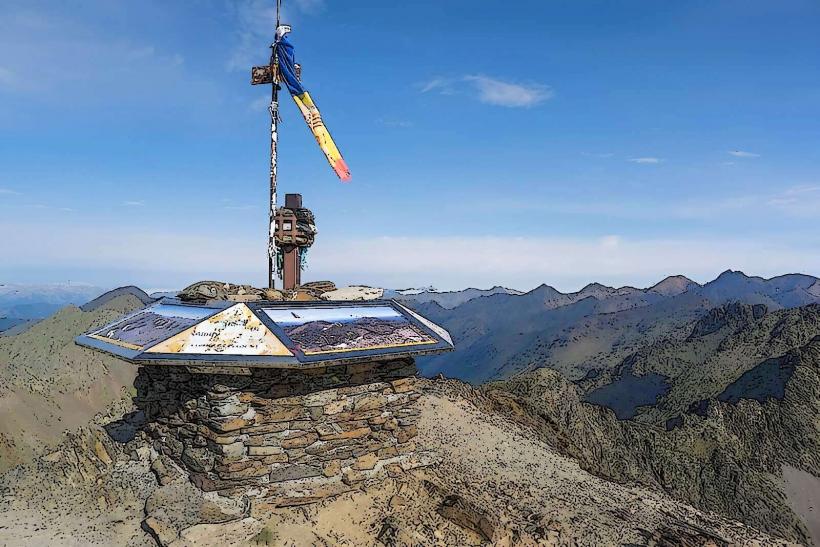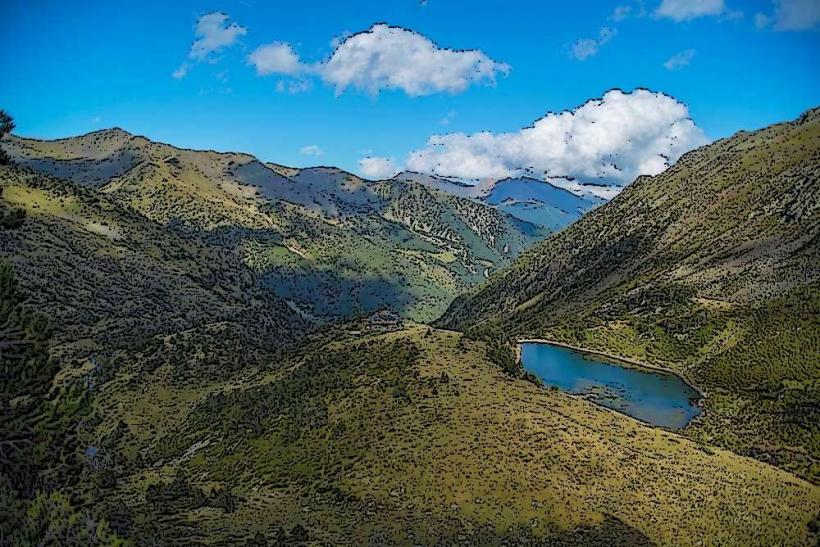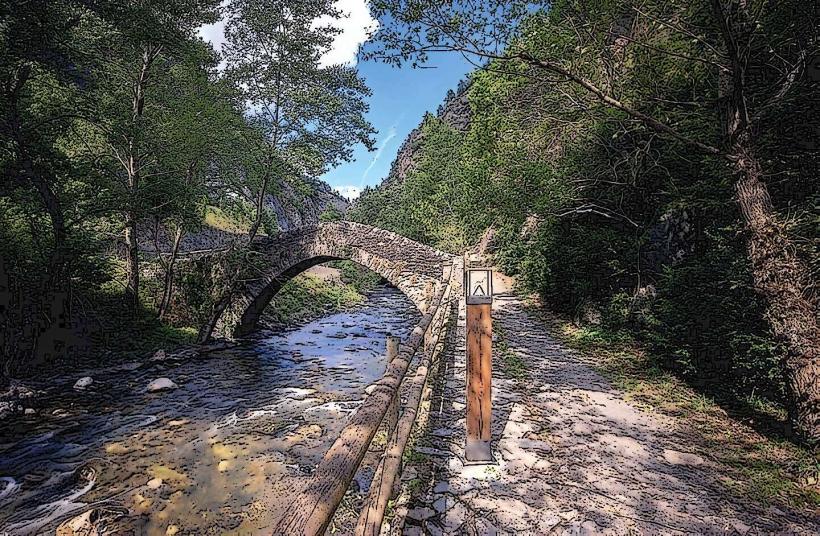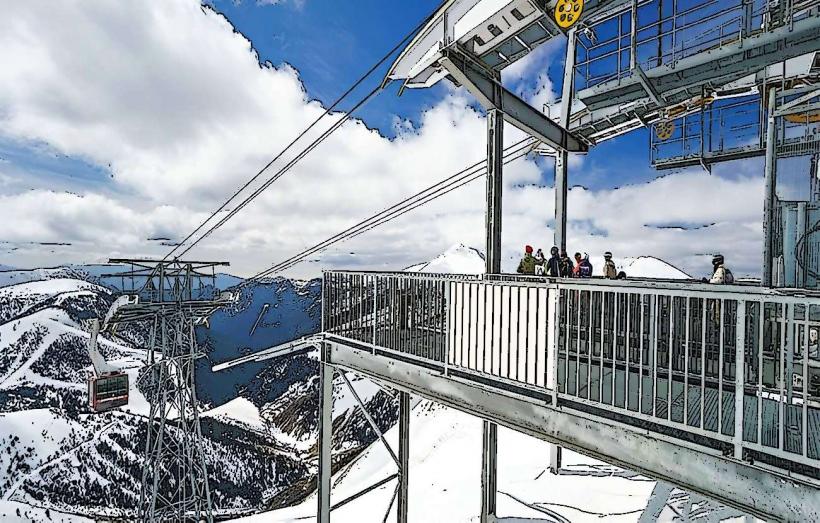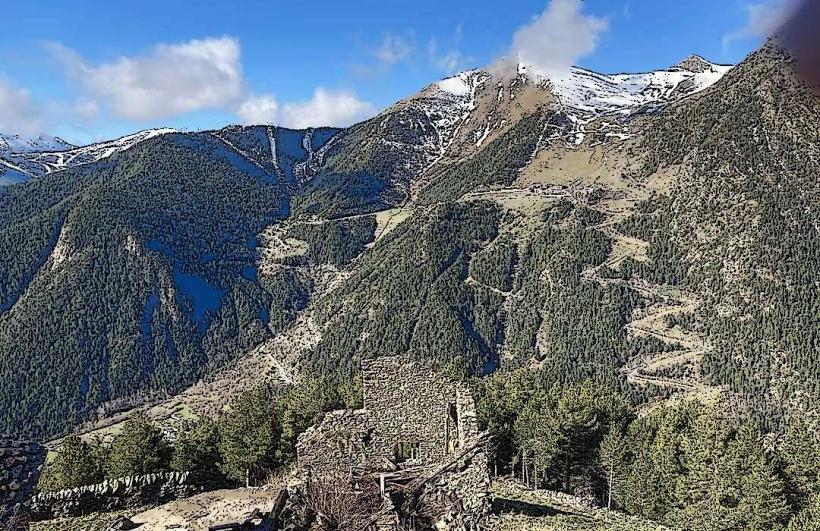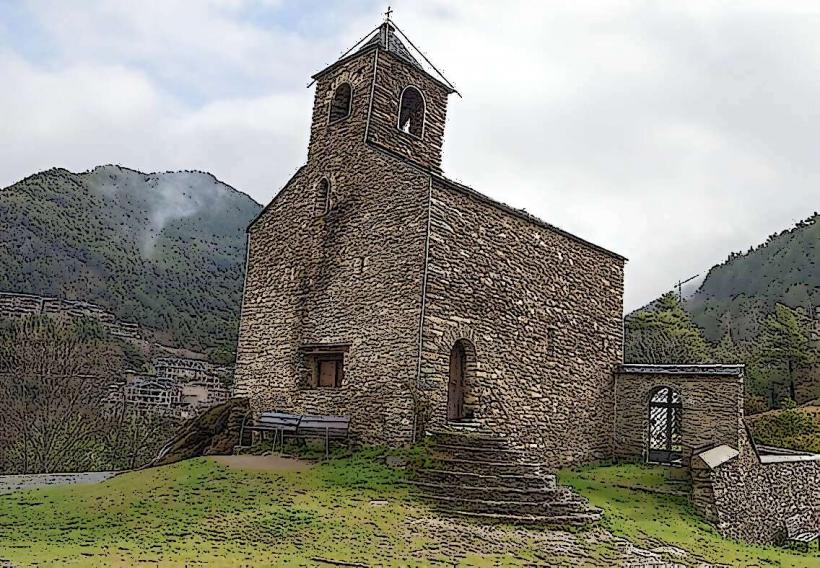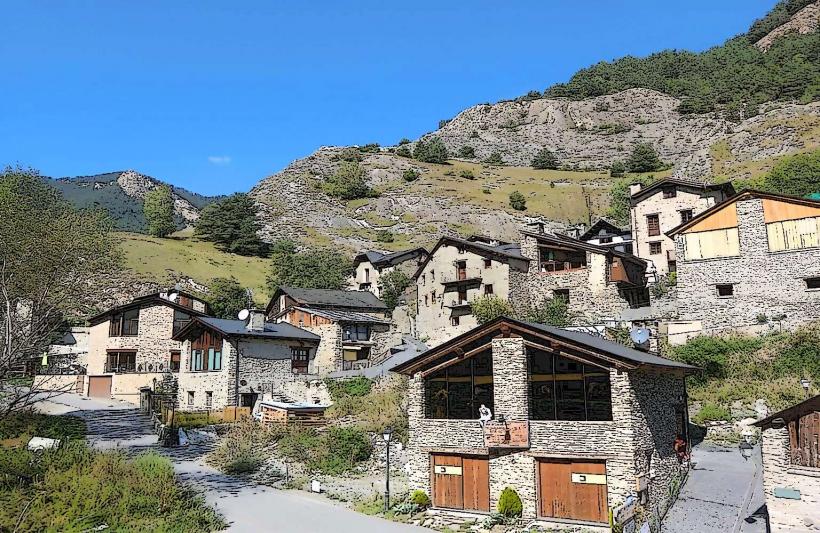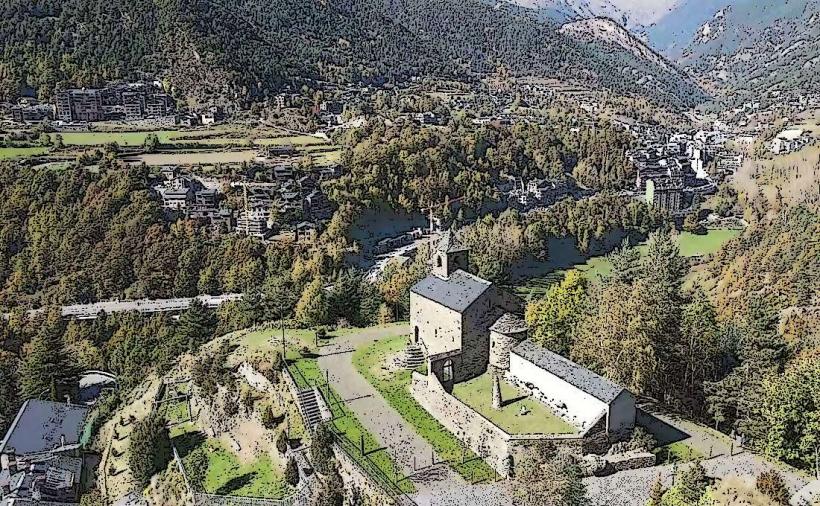Information
Landmark: Church of Sant Joan de SisponyCity: La Massana
Country: Andorra
Continent: Europe
The Church of Sant Joan de Sispony (Iglesia de Sant Joan de Sispony) is a Romanesque-style church located in the village of Sispony, within the La Massana parish in Andorra. The church is one of the oldest religious buildings in the country and serves as a key historical and cultural landmark in the region.
1. Location and Setting
- Geographic Location: The Church of Sant Joan de Sispony is situated in the village of Sispony, about 5 km from the town of La Massana. It is positioned in a picturesque mountain setting, surrounded by the stunning Pyrenean landscape, which adds to the church’s historical charm and tranquil atmosphere. The church offers beautiful views of the surrounding valley and the majestic peaks of the Pyrenees.
- Setting: The church is set within a serene, rural environment, making it a peaceful place for reflection and a popular spot for visitors interested in Andorra’s religious and cultural heritage.
2. Architectural Features
- Romanesque Architecture: The Church of Sant Joan de Sispony is an example of Romanesque architecture, a style that was prevalent in the 12th and 13th centuries in the Pyrenees. The church features the typical characteristics of this style, including thick stone walls, simple yet elegant design, and a bell tower.
- Stone Construction: The church is built using local stone, which gives it a rustic and enduring quality. The materials used reflect the traditional building techniques of the time, and the structure is harmoniously integrated into the surrounding mountainous landscape.
- Bell Tower: The church has a square bell tower which is a prominent feature of the church's exterior. The tower is a classic example of Romanesque bell towers in the Pyrenees, and it is visible from various points in the village and surrounding area.
- Facade: The facade of the church is simple, with a rounded arch over the entrance, which is typical of Romanesque doors. There are also small windows that let in light but remain modest in size, consistent with the austere and functional nature of Romanesque architecture.
3. Interior and Art
- Simple Yet Beautiful Interior: The interior of the church is modest but serene, with an altar and wooden pews arranged for communal worship. The simplicity of the interior space reflects the Romanesque style, which emphasized functionality over elaborate decoration.
- Religious Artwork: While the church’s interior is relatively understated, it features some religious artwork and symbols typical of Andorran Romanesque churches. These may include paintings, sculptures, and altarpieces, many of which are devoted to Christian saints and biblical scenes.
- Rural Church Atmosphere: As a rural church, Sant Joan de Sispony serves not only as a place of worship but also as a cultural symbol for the local community. The church is often a place where locals gather for religious services, particularly during important feasts or religious holidays such as Saint John’s Day (the patron saint of the church).
4. History and Significance
- Historical Origins: The church was built in the 12th century, making it one of the oldest surviving religious buildings in Andorra. It was likely constructed during a period of Christian expansion in the region, following the Romanesque architectural trends that spread through Europe.
- Religious Role: Over the centuries, the Church of Sant Joan de Sispony has served as the center of religious life in the village of Sispony. It remains an important site for the local community, with ongoing religious services, especially during significant liturgical events. The church also plays a role in Andorra's cultural heritage as an example of the country's Romanesque religious architecture.
- Preservation and Restoration: The church has undergone several restorations to preserve its structure and historical integrity, ensuring that future generations can continue to appreciate its architectural and historical significance. These efforts have helped to maintain the church as a cherished landmark in the region.
5. Cultural and Community Role
- Local Festivals and Celebrations: The Church of Sant Joan de Sispony is central to many local festivals and religious celebrations, including those related to the patron saint of the village, Saint John. These celebrations often include processions, masses, and communal gatherings that highlight the village’s religious traditions.
- Pilgrimages and Visitors: While not a major pilgrimage site, the church attracts visitors due to its historical significance, its tranquil setting, and its role in preserving Andorra’s religious heritage. The church offers a peaceful stop for those touring the La Massana area or exploring Andorra's medieval and Romanesque architecture.
6. Visiting the Church
- Access and Location: The Church of Sant Joan de Sispony is easily accessible from the village of Sispony and is situated just a short distance from La Massana. Visitors can explore the church on foot or as part of a wider tour of the area.
- Opening Hours and Services: The church is open to visitors, especially during religious services. It is advisable to check local schedules for mass times or events before visiting if you wish to experience the church’s spiritual and cultural activities.
- Atmosphere: Visitors to the church will find a peaceful atmosphere, ideal for reflection and appreciation of its history. The serene mountain backdrop and the historical architecture combine to make it a worthwhile stop for those interested in Andorran culture and heritage.
Conclusion
The Church of Sant Joan de Sispony is a significant historical and cultural site in the village of Sispony, Andorra. With its Romanesque architecture, simple yet beautiful design, and rich history, it provides a glimpse into the religious and cultural life of Andorra's past. Whether you're interested in its architectural details, its religious significance, or its role in the local community, the Church of Sant Joan de Sispony is a key landmark for anyone visiting the La Massana region. Its tranquil setting and historical charm make it a must-see for those exploring Andorra’s mountainous villages and religious heritage.

